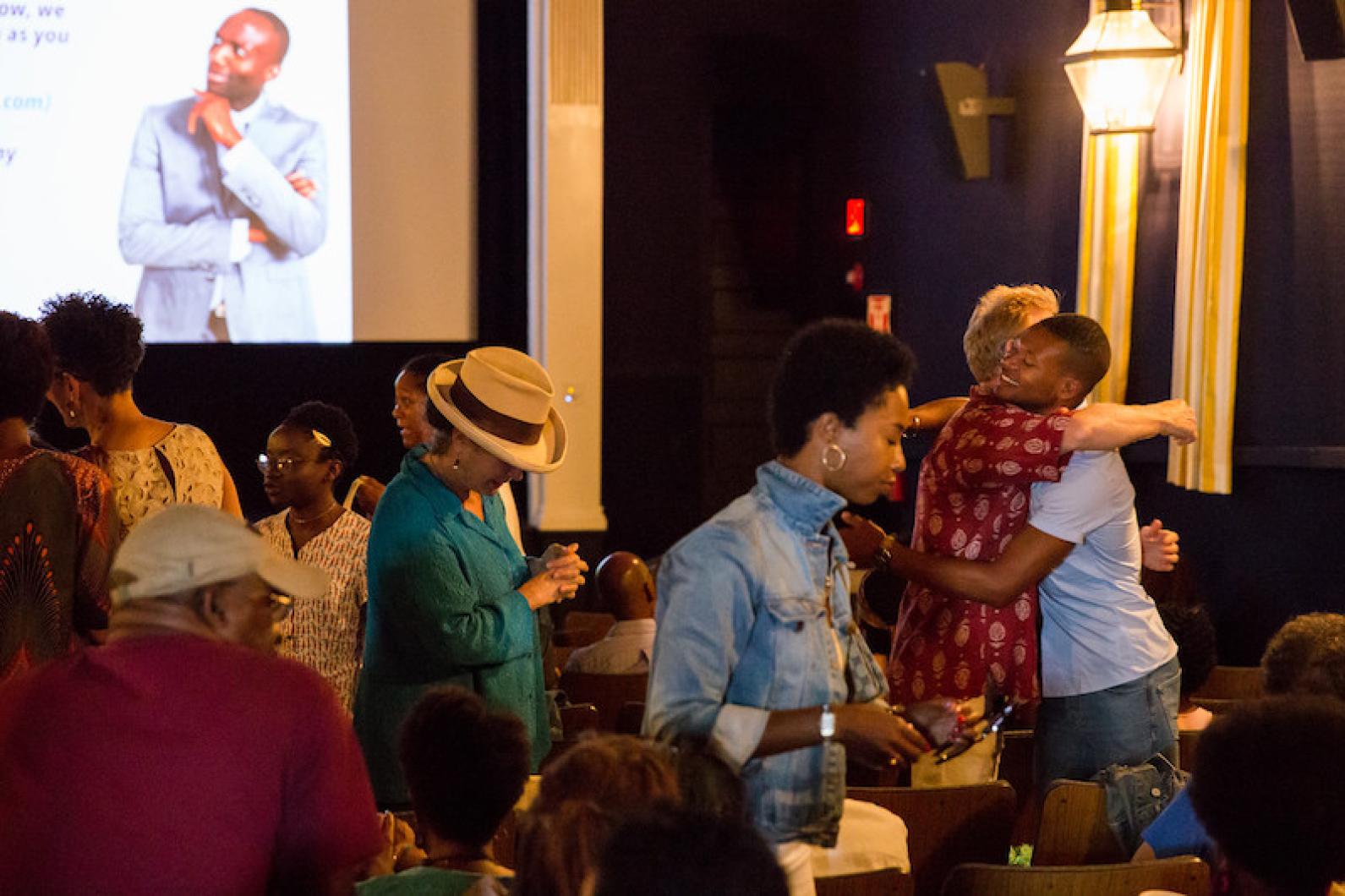Every seat in the Capawock Theatre was taken last week for an invitation-only advance screening of the new documentary, Miles Davis: Birth of the Cool, which officially opens August 23 in New York city.
As audience members filled the movie house, director Stanley Nelson shook hands and greeted many by name. A multiple Emmy award-winning filmmaker and a MacArthur fellow who has also been awarded a lifetime achievement award from the National Academy of Television Arts Sciences and a National Humanities Medal by President Barack Obama, Mr. Nelson is a longtime summer resident of Oak Bluffs. He and his wife Marcia Smith, through their production company Firelight Media, specialize in documentaries including Tell Them We Are Rising: The Story of Black Colleges and Universities and numerous films for the public television series American Masters.
Miles Davis: Birth of the Cool, which premiered at the Sundance film festival earlier this year, was funded in part by private equity manager and jazz fan David Grain, a 1980 graduate of Martha’s Vineyard Regional High School who summers on the Vineyard with his wife Lisa and their two children.
“Lisa and I have been blessed, and we decided to lean in” to support Mr. Nelson’s documentary, Mr. Grain told the audience.
“This would have been a far different film without your support,” Mr. Nelson said to Mr. Grain at the screening.
The 115-minute documentary mixes archival footage, a wealth of still photography and dozens of interviews with friends, fellow musicians and jazz scholars to trace the life and art of Mr. Davis, a brilliant artist who changed not only jazz but rock and funk as well with his ever-evolving musical explorations.
Mr. Nelson draws extensively on Mr. Davis’s own words, voiced in the film by actor Carl Lumbly, and interviews with friends from the musician’s childhood and youth as well as those who knew him later in life.
As the son of a dentist in East St. Louis, Ill., Mr. Davis’s affluent upbringing did not shield him from learning the hard lessons of segregation — the white community was “racist to the bone,” in his words — and witnessing domestic abuse between his parents that likely influenced his own violence against women later in life.
In New York city, still a teenager, he studied music at the Juilliard School by day and played the 52nd street bebop clubs by night with stars like Charlie Parker and Dizzy Gillespie, whom he had met playing in Billy Eckstine’s band.
“I wanted to see what was going on in all of music,” Mr. Davis says, in Lumbly’s voice.
He also learned he hadn’t left bone-deep racism behind in Illinois, the night he was attacked (and then arrested) by New York policemen outside the club he was headlining. It was 1959, a few months after he recorded the monumental album Kind of Blue, and his offense was refusing to “move along” while taking a cigarette break between sets.
Photo montages — including a shocking series from the jail that night — and film clips help set the scene for each phase of the film, balanced with recent interviews. After a young Walter Cronkite smilingly mentions “the musical noise called ‘jazz,’” in the 1940s, modern music writer Greg Tate reframes the terms: “Bebop musicians were rocket scientists. It was developed by some serious sound physicists.”

Exploring the bounds of sonic space, Mr. Davis broke more barriers than any musician of his time, evolving from a big-band sideman to a pathmaking leader whose work continued to move ahead until his death at 65 in 1991.
“If anybody wants to keep creating, they have to be about change,” he wrote.
Along the way, Miles Davis: Birth of the Cool gives viewers unprecedented access to his life and career. Columbia Records, which signed him to a long-term contract in 1955, documented their star with professional photography and filming during his recording sessions, and Mr. Nelson brings many of these images to the big screen for the first time.
It’s fascinating to watch Mr. Davis move from cool, classically-influenced modal jazz sessions, documented in black and white stills, to the electrified funk-rock of the Bitches Brew and On the Corner jams, captured in moving color. Even more color comes from interviews with musicians who have played with him, including Carlos Santana and Marcus Miller.
Women played a subordinate role in Mr. Davis’s life, but so did everyone else. Music “comes before everything,” in his words. Only one of his ex-wives, the first, Frances Taylor Davis, was willing to speak on camera, a few months before she died at 89 late last year.
A former dancer whose recollections appear at several points during the film, Ms. Taylor Davis quickly became the favorite of the Vineyard Haven audience, which erupted in applause every time she dimpled while mentioning her still-great legs.
But Ms. Taylor also described an increasingly controlling husband who forced her to drop out of the Broadway production of West Side Story and become a housewife, then later knocked her to the ground. Mr. Davis’s second marriage, to the much younger funk and soul singer Betty Mabry, lasted a year. His last, to actress Cicely Tyson, an ex-girlfriend from the 1960s, also ended in divorce.
Miles Davis: Birth of the Cool does not flinch at the artist’s violence, drug use or his general misanthropy. Unprintable epithets abound. His favorite endearment was a four-syllable curse word, something PBS will have to cope with when the documentary airs as part of the American Masters next year.
But he also moved music, not just jazz, consistently forward from the 1940s through the 1980s, leaving a recorded legacy that still astonishes with its freshness. For fans and the curious alike, Mr. Nelson’s documentary is a deep dive into what may always be bottomless waters.





Comments (4)
Comments
Comment policy »